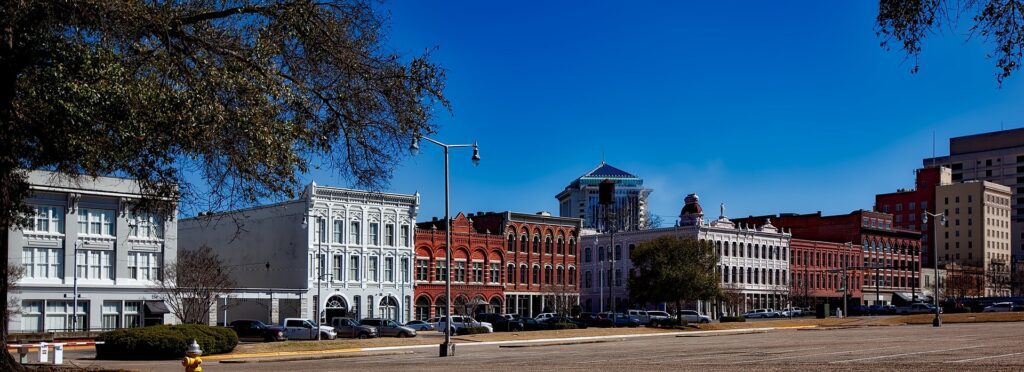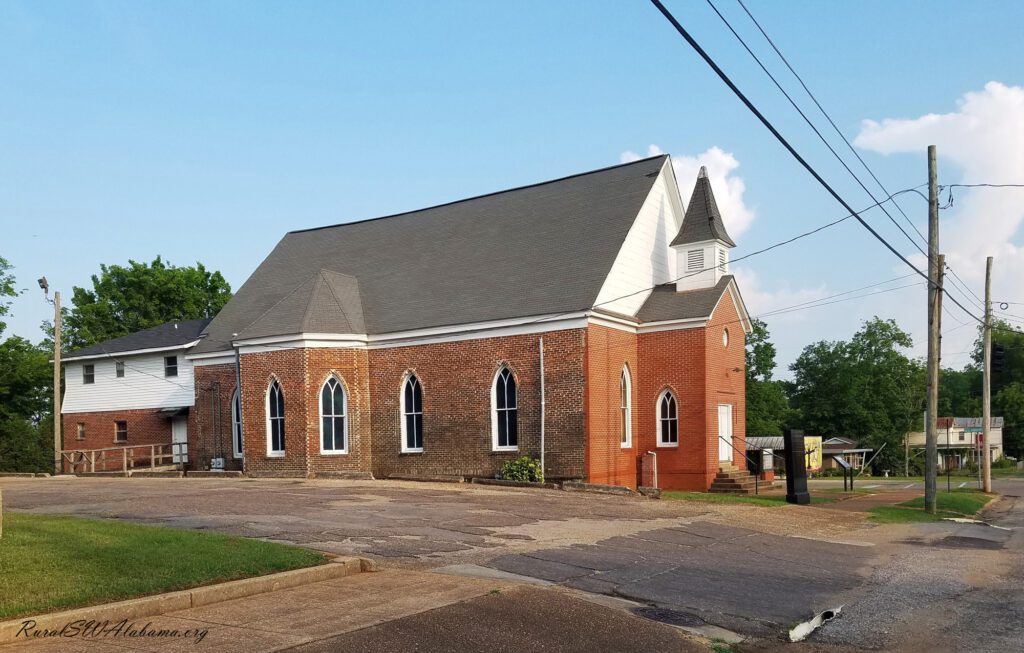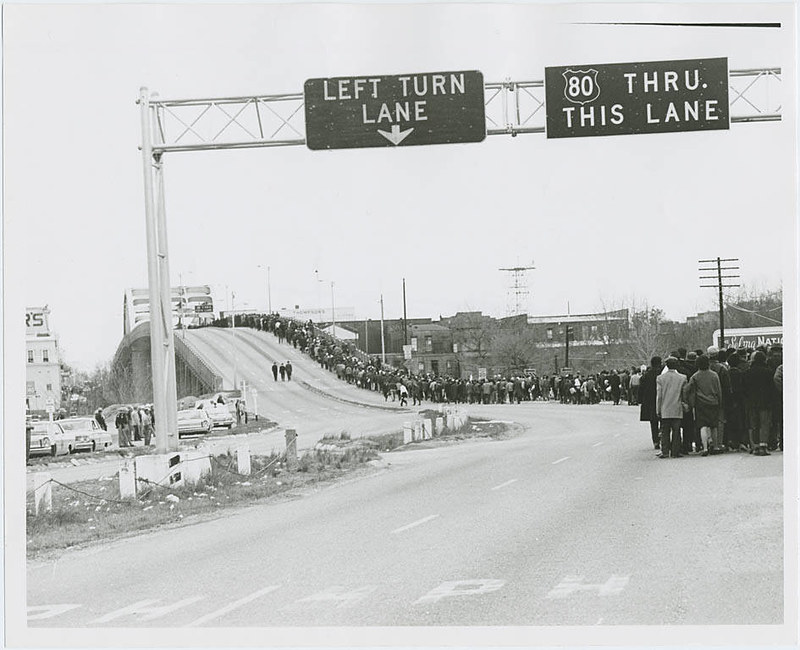
About the Byway
The Selma to Montgomery March Byway is a 54-mile trail in Alabama. Designated as an All-American Road, it follows the path of the historic 1965 civil rights march from Selma, Alabama to Montgomery, Alabama. Here’s an overview of the famous history of that road.
Civil Rights History
At the Zion United Methodist Church in Marion, Alabama, on the night of February 18, 1965, civil rights activists gathered for a peaceful protest. They were met with violence. Alabama State Troopers attacked the protesters and shot demonstrator Jimmie Lee Jackson, who died eight days later.

Martin Luther King, Jr. delivered his eulogy, saying, “I never will forget as I stood by his bedside a few days ago…how radiantly he still responded, how he mentioned the freedom movement and how he talked about the faith that he still had in his God. … We must be concerned not merely about who murdered him but about the system, the way of life, the philosophy which produced the murderer.”
Spurred by Jackson’s death, King and the Southern Christian Leadership Council (SCLC) organized a protest march from Selma to Montgomery. The voting rights march would make bloody but ultimately triumphant history.
Bloody Sunday
The march set out from Selma on March 7, 1965, later known as “Bloody Sunday.” The group of 600 marchers was brutally attacked and forced back. Activist John Lewis had his skull fractured, and was one of 58 people admitted to the hospital for injuries sustained during the event. The violence was shown on television and drew many civil rights and religious leaders to Selma for the next attempt.
Edmund Pettus Bridge

On March 9, more than 2,000 marchers were again waylaid by the Edmund Pettus Bridge in Selma. That night, a group of segregationists beat a young white minister to death for protesting.
Soon after, President Lyndon B. Johnson pledged support for the marchers and ordered U.S. Army troops and Alabama National Guard forces to protect them. This allowed about 2,000 protestors to leave Selma on March 21 and reach Montgomery on the March 25, where civil rights leaders addressed the crowd.
After bloody beginnings and tragedy, the march was a success, leading to the adoption of the Voting Rights Act of 1965. This legislation outlawed practices designed to prevent eligible Black people from voting.
By October of that year, 110,000 Black people had registered to vote in Alabama, Mississippi, Georgia, and Louisiana. Today, the Selma to Montgomery March Byway preserves that history and acknowledges the tragedy and triumph in our past.
Here at Scenic America, we value these historic places and want them to see them persist. We work to preserve the Scenic Byways, landscapes, and towns that define our nation’s visual character. Read about our principles of conservation, see what we accomplished in 2021, or sign up for our newsletter to stay up-to-date on our work and how you can help.
Scenic America’s mission is to preserve and enhance the visual character and scenic beauty of America. Donate today to help us protect our beautiful places and the heart of our country’s character!